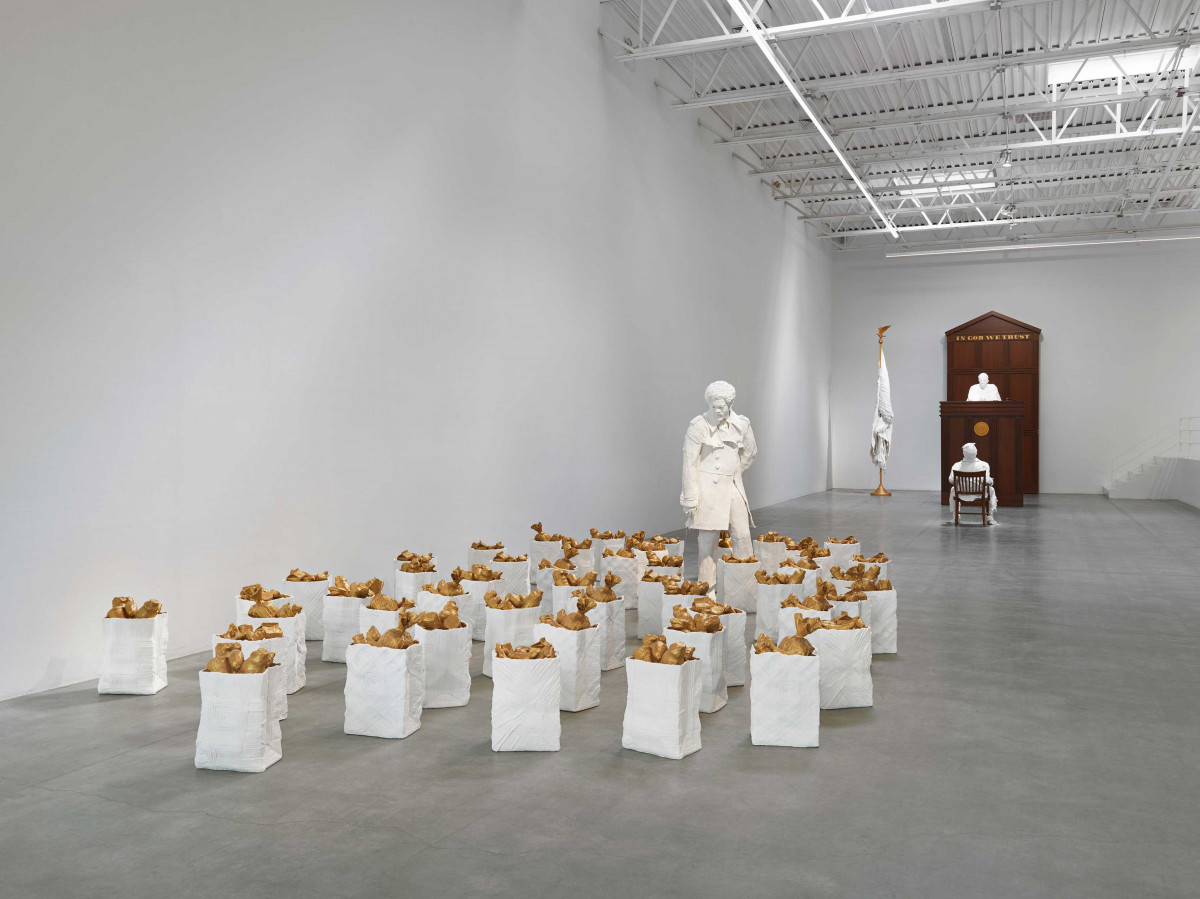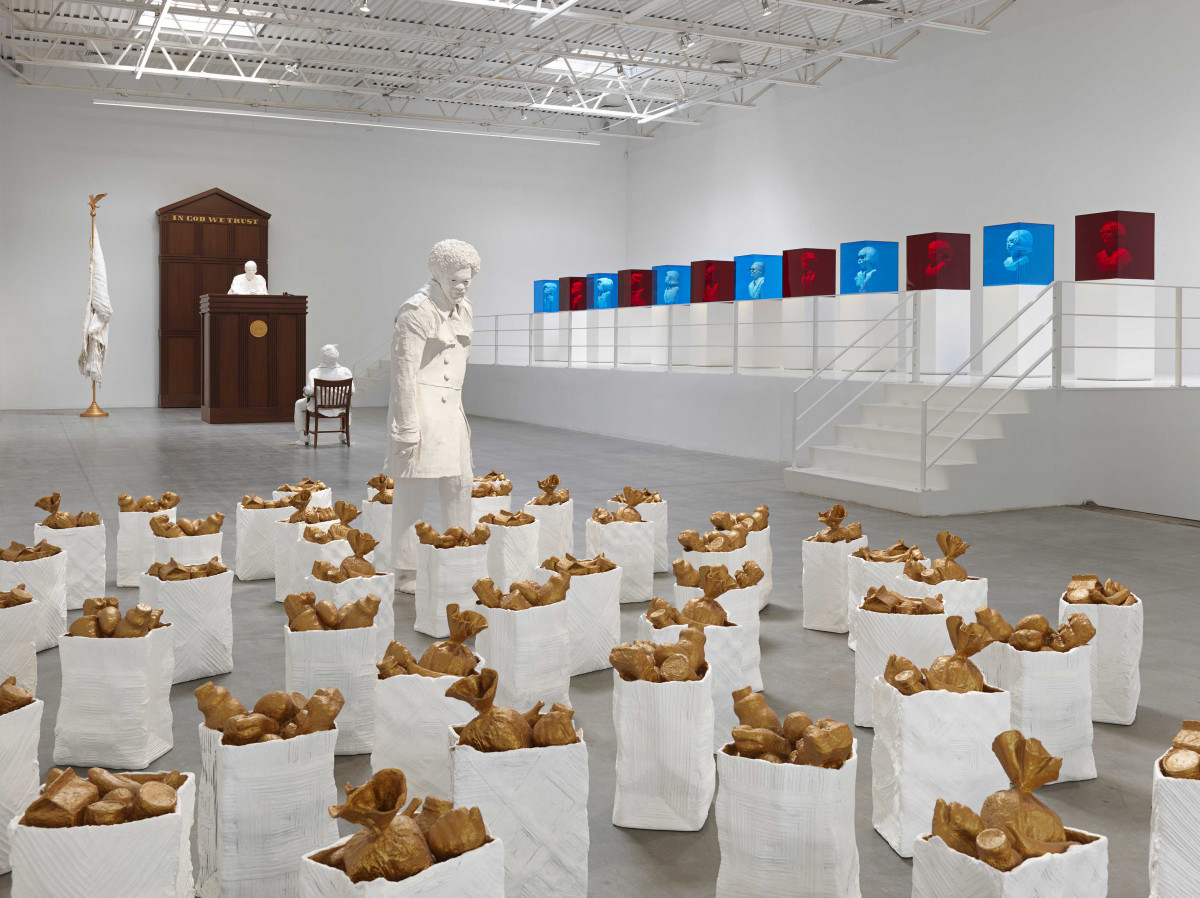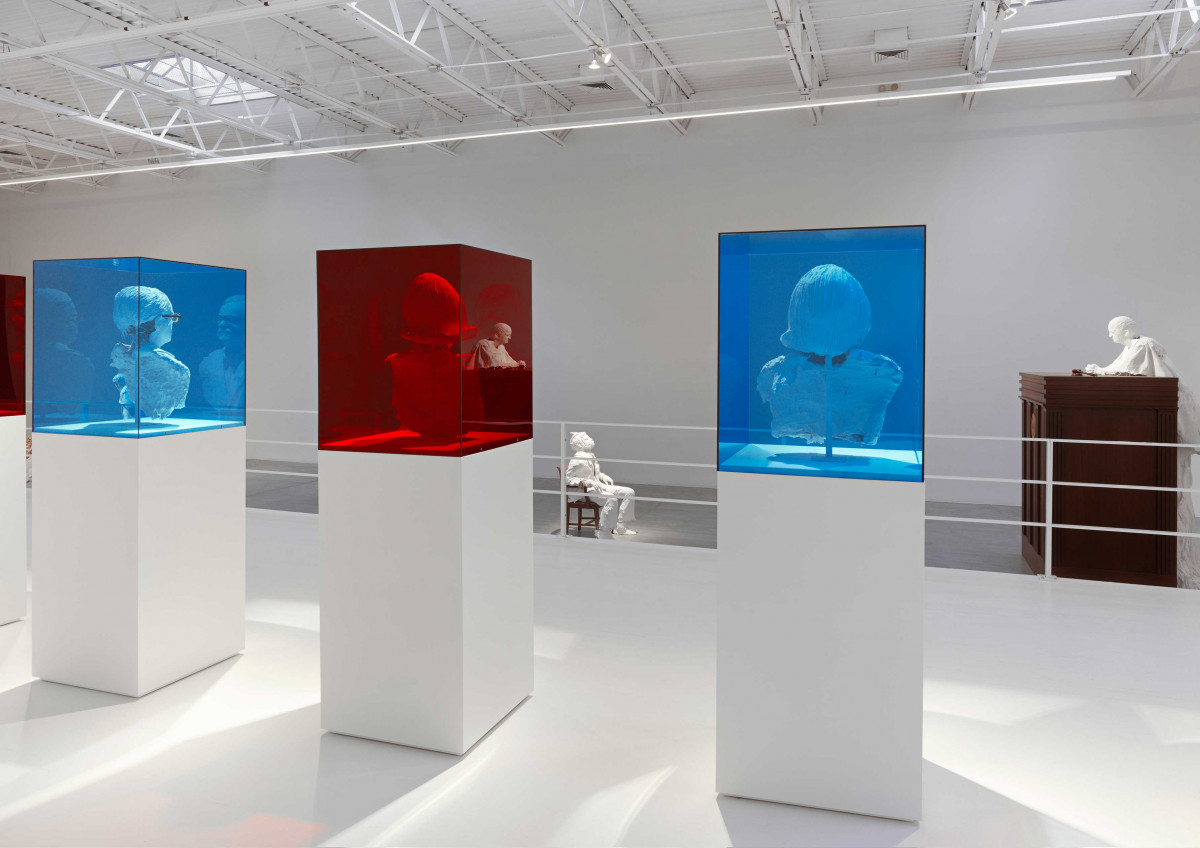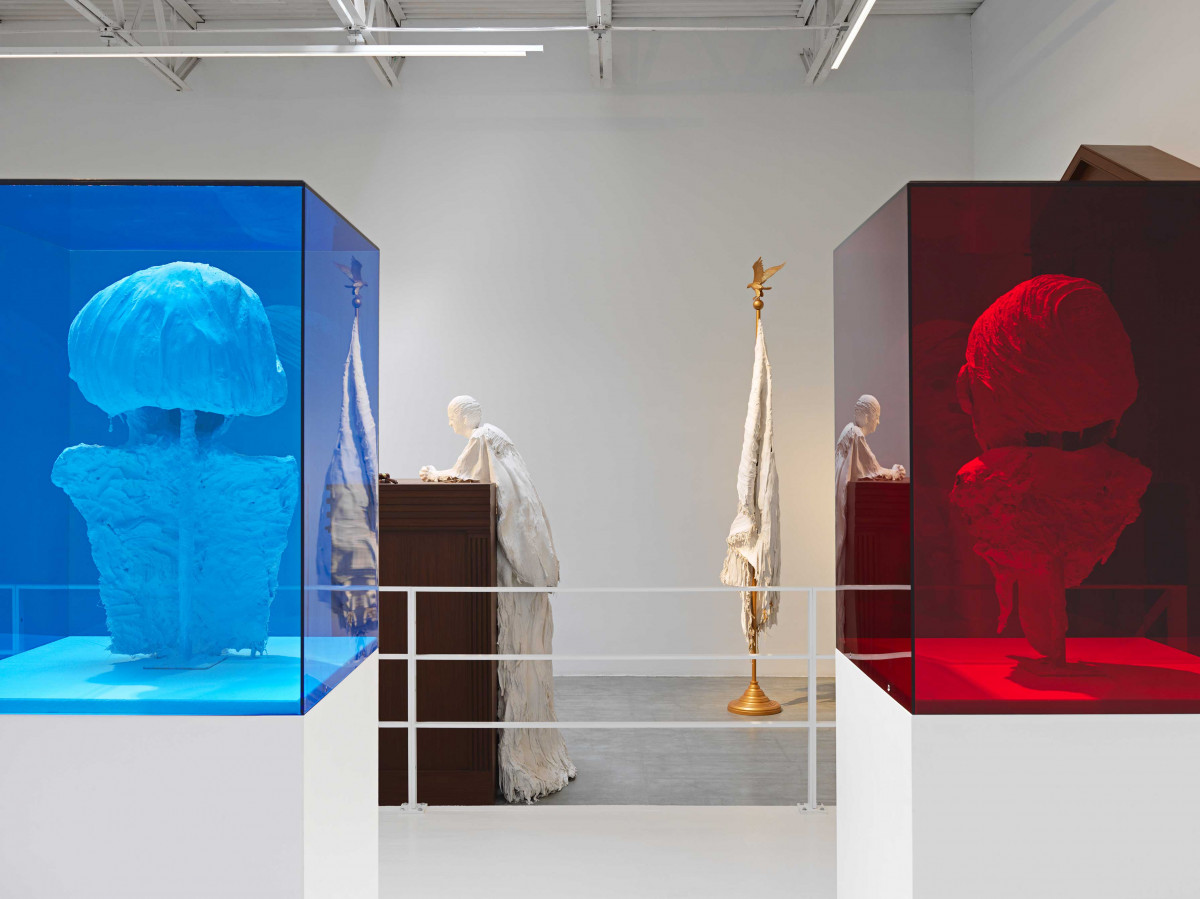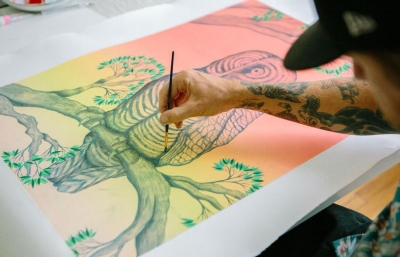Bobby Seale, bound and gagged in a Chicago courtroom, is one of the most searing images in American history. There were no photographs of this shocking episode during the trial of the Chicago 8 in October 1969, only artists’ sketches. This has made the image even more resonant as we conflate the sketches and subsequent actors’ portrayals in our visual memory. The image of Bobby Seale, physically restrained but defiant, refusing to submit to the judge, has haunted the artist Karon Davis for many years. It became especially provocative during the past year’s incidents of police violence.
A powerful sculptural tableau of a bound and gagged Bobby Seale in front of Judge Julius Hoffman and the Chicago jury will confront visitors to Karon Davis’s exhibition. Displayed in front of the courtroom are fifty sculpted bags of groceries, juxtaposing the Black Panthers’ free food program for the Black community in Oakland, California, with the repression of the judicial system.
Davis’s theme for the exhibition is “No Good Deed Goes Unpunished,” a reference to the government’s violent prosecution of the Black Panthers and its distortion of the public’s understanding of the Panthers’ contributions to their community. She describes the bags of groceries as a “garden of golden fruit.” Their mummification represents the preservation of Black lives and culture. Davis sees the artist as a keeper of contemporary history, reminding people of past events that still resonate in the present.
Karon Davis also has a personal connection to the story of the trial of the Chicago 8. One of her father’s first acting gigs was voicing the role of Bobby Seale for a reading of the trial transcript. The recording was released as a vinyl record, which her father would talk about, but which she had never listened to. She eventually found the LP in an antique shop in Leimert Park, Los Angeles that sold old records in the back.
Davis talks about how being wrongly accused by the police and the courts is an epidemic that African Americans live with. The experience of growing up Black in America has unfortunately found her more than once in positions where she has feared for her safety. She recalls one such frightening incident about a decade ago when she and her late husband, artist Noah Davis, were driving from his gallery opening to their celebratory dinner. Los Angeles police pulled over their car and dragged them out of their seats. Noah was pushed face down onto the sidewalk and handcuffed. Karon, in her party dress and high heels, was also handcuffed and thrown against a wall. She urged Noah to stay calm. After being restrained and held on the sidewalk for an hour and a half, they were finally released – they had “fit the description” of people who were being sought for a robbery. The events of the past year kept Karon thinking about what could have turned this all-too-common scenario into tragedy.
She had begun a sculpture of Bobby Seale bound to a chair about two years ago but had put it aside to pursue other sculptural projects. The image stayed in her mind, and with the violence against black bodies that convulsed much of America during the past year, she decided that it was the right time to engage with his story.
Davis tells this story in her unique sculptural language. She has developed a technique that deconstructs the tradition of plaster casting. She fuses life casts of friends and family with casts of her own body parts to create haunting, ghost-like figures. Sections of the bodies are deliberately missing so that the completion of the figure is left to the viewers’ imagination. The brokenness of the works is reflective of the situation in which the figures are broken inside. Davis strives to create an “in-between state,” which captures the soul.
Davis is fascinated with ancient Egypt and connects her technique with mummification. She uses strips of plaster to wrap the body, piecing her subjects back together. She also thinks of her sculptural tableaux as mummifying the stories of Black history that she is driven to tell.
The artist’s background in theater informs her approach to sculpture. Davis comes from a show biz family and grew up in rehearsal halls. She spent years studying dance and watching performances. Her original intention was to go to film school and make movies. She wanted to tell stories.
Her sculptural courtroom is like a frozen scene from a play – a play that the viewer can enter and experience. She “casts” her subjects as a theater director would, in addition to her “casting” them in plaster. She found a model with a remarkable resemblance to Bobby Seale. The sculptures of the twelve jurors appear to be portraits of the actual participants but are cast from people in her inner circle: her sister, her Los Angeles gallerist, friends of her studio manager as well as parts of her own face.
Davis predominately makes sculptures of Black figures. She explains that if she has not seen a specific image of Black history in art history, she tries to create it herself. In No Good Deed Goes Unpunished, the viewers are witness to one of the most unjust trials in American history. The work celebrates the defiance of Bobby Seale in the face of injustice.
No Good Deed Goes Unpunished is Karon Davis’s first solo exhibition in New York.



